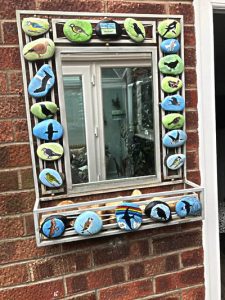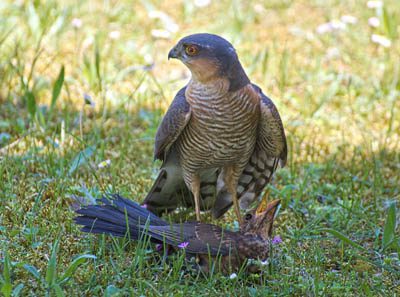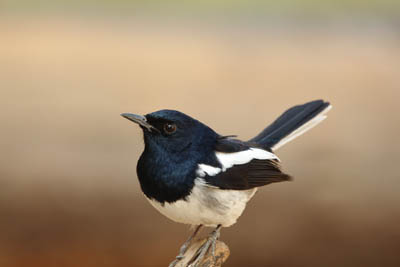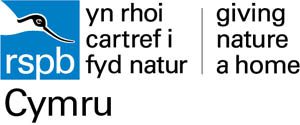adapted from an article by David Healey
Has the lockdown been a bonus for nature? David Healey fears that if we do not press a reset button to reverse the long-term decline of species.
The UK lockdown, which has given rise to so much misery, confusion and genuine anxiety, has at least produced one silver lining as far as the environment is concerned. It has cut global pollution and human activity beyond anything we could envisage. It has also enabled nature to reclaim lost ground in numerous ways. My lockdown window project suggests that we still have a long way to go to produce a permanent reversal in the decline of some of our most cherished species.
An Opportunity

Trying to remain positive, I convinced myself that the lockdown was an opportunity rather than a threat. It would allow me to get to know my paints and paintbrushes somewhat better. It was also a chance for me to make a serious record of the avian life of my neighbourhood.
I had several suitable-sized stones that I was going to use for an art project with local children, but lockdown put an end to that plan. The new project became one of painting a picture of every species of bird seen through my window. When my wife suggested that I should mount the painted stones on the metal frame of an old outdoor mirror. The vision of a memorial to birds from my lockdown window was born.
Admiration
While the act of self-discovery has convinced me that I am not an artist, the activity has filled me with an admiration for those who do have the skill to capture accurately the proportion, colours and essential ‘jizz’ of a bird. I will never be in the league of the great masters who illustrate our bird books. Even so, the exercise has been an immensely thought-provoking, albeit an eye-opening and shocking one.
The most striking realisation was the absolute paucity of birdlife in terms of numbers and the variety of species in my garden in comparison with when I had first moved into the house some 30 years ago. I have recollections of birdfeeder visits from nuthatches, great spotted woodpeckers, blackcaps, goldfinches, greenfinches, bullfinches and chaffinches. I even have a distant memory of the odd song thrush wrestling with a snail in the garden. Several of these birds were now conspicuous by their absence and this came as a shock.
Distant Sightings

With an absence of smaller birds, there wasn’t any sign of the opportunistic sparrowhawk either. I recalled previous sightings of the occasional one on the garden fence. A bird creating havoc amidst an overhead flock of jackdaws or perhaps a victim’s feathers on the lawn. While I did notch up a greenfinch and a goldfinch, they were somewhat distant tree-top sightings which were not in my garden itself. That was despite my provision of an ample supply of; mealworms, sunflower hearts, Niger seed and black sunflower seeds in various feeders.
The annual RSPB Big Garden Birdwatch had provided me with a snapshot of the decline, but it is all too easy to dismiss the findings as those of ‘a bad weekend.’ The lockdown meant that I had a prolonged period to focus on the real and shocking extent of the decline; it was like being hit with a sledgehammer.
Plummeting Numbers

Of course, multiple reasons have been put forward for the plummeting numbers and the decreasing variety of birds in our gardens and countryside. Locally, there has been a significant loss of garden hedgerows and trees and a proliferation of decking, patios and gardening solutions designed for easy maintenance. There has also been a sharp increase in the number of neighbourhood cats and I could have easily adorned my stones with images of those if I had wanted to. It is, perhaps, little wonder that no robin or wren ventured into my garden at the height of their breeding season.
The surrounding area in my part of north-east Wales is broadly rural, but a lot of areas that were previously green spaces are now housing estates and this has contributed to a general loss in suitable habitat. I suspect that there is a degree of universality in this story and that others share it across the length and breadth of the United Kingdom.
A Key Message

If there is one salutary lesson that must emerge from my lockdown window. It is that there is a desperate need for us all to take on board the RSPB message to Give Nature a Home. My own experience has convinced me to renew my commitment to do this as far as my garden is concerned. It’s a postpandemic resolution!
One of the key messages of the RSPB has been that if you create a habitat that is suitable for birds, you create one which is ideal for other wildlife as well. Many will share my experience of the lockdown: given the chance to study the birdlife in the garden for a prolonged period, it is quite shocking to see how severe the decline has been. The horrendous coronavirus pandemic, which has cost us dearly in so many ways, must give rise to a ‘new normal’. We will miss the opportunity of a generation if we do not seize the opportunity to re-establish a place for birds and wildlife in our gardens and countryside.

David Healey is a retired schoolteacher living in Hope. The birds depicted in the memorial are (clockwise) starling, magpie, herring gull, blackbird, house sparrow, heron, dunnock, Canada goose, coal tit, house martin, rook, swallow, goldfinch, buzzard, greenfinch, wood pigeon, carrion crow, jackdaw, lesser blackbacked gull, collared dove, blue tit and great tit.
The period of observation was from the commencement of the lockdown on 23rd March to the first easing of restrictions on 11th May. You can email David at dhealey204@aol.com
Thank you for reading ‘Birds from My Lockdown Window’. For more Coronavirus related articles, click here.

